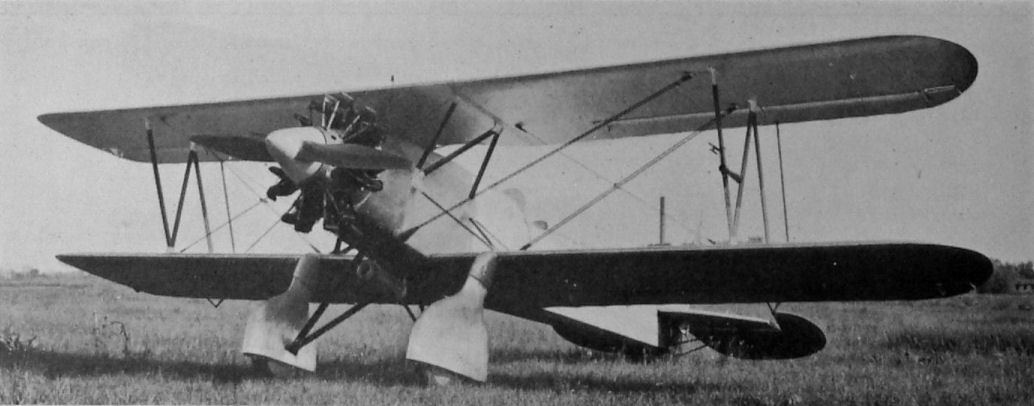
Описание
Страна : Италия
Год : 1931
Двухместный учебный самолет повышенной летной подготовки
Варианты
Caproni Са 113
Са 113, представленный в 1931 году как дальнейшая разработка учебного биплана Са 109, являлся самолетом для совершенствования летчиков и имел тандемно расположенные кресла. Изначально на Са 113 устанавливался звездообразный двигатель Walter Castor мощностью 240 л. с. (179 кВт), позднее его заменили на Piaggio Stella VII С.35. Главное достижение Са 113 - установление мирового рекорда высоты в 14433 м. Это сделал Ренато Донати 11 апреля 1934 года на модифицированном самолете с увеличенным размахом крыла, двигателем Alfa Romeo (Bristol) Pegasus мощностью 750 л. с. (559 кВт) с турбонагнетателем и четырехлопастным воздушным винтом. На нем же в 1935 году Контесса Карина Негроне установила рекорд высоты для женщин - 12010 м.
Вариант
Ка.В.3: многоцелевой двухместный Са 113, разработанный филиалом "Caproni" в Болгарии; имелась возможность применения нескольких типов звездообразных двигателей
ТАКТИКО-ТЕХНИЧЕСКИЕ ХАРАКТЕРИСТИКИ
Caproni Са 113
Тип: двухместный учебный самолет повышенной летной подготовки
Силовая установка: звездообразный двигатель Piaggio Stella VII С.35 мощностью 370 л. с. (276 кВт)
Летные характеристики: макс, скорость на оптимальной высоте 250 км/ч: набор высоты 3000 м - за 5 мин 40 с; практический потолок 7300 м; дальность полета 300 км
Масса: пустого 850 кг; максимальная взлетная 1100 кг
Размеры: размах крыла 10,50 м; длина 7,30 м; высота 2,70 м; площадь крыла 27,00 мг
Описание:
- Caproni Са 113
- Flight, April 1932
The Caproni CA.113
Фотографии
-
Jane's All the World Aircraft 1938 / 03 - All the world's aeroplanes
The Caproni Ca.113 Two-seat Advanced Training Biplane (370 h.p. Piaggio "Stella" engine).
-
Мировая Авиация 83
Регистрационный номер: I-MARY Са 113 с мощными двигателями был хорошим учебным самолетом и машиной для высшего пилотажа. На этом самолете был выигран Кубок на Кливлендских воздушных гонках 1931 года за высший пилотаж.
-
Air Enthusiast 1998-05 / R.Niccoli - Portuguese Numerology
The Aeronautica Militar also acquired a single Caproni Ca.113 in 1934.
-
Flight 1932-04 / Flight
FOR AEROBATICS: The Caproni CA.113, which is fitted with a 240-h.p. Walter air-cooled radial engine.
-
Jane's All the World Aircraft 1980 / Encyclopedia of Aviation - Aircraft A-Z - v2
The Caproni 113 two-seat advanced or aerobatic trainer was normally powered by the 240 h.p. Walter Castor radial engine, but the example shown here is an extensively modified version on which Renato Donati captured the world’s altitude record in 1934 by flying to 47,360 ft. Modifications included the covering of the forward cockpit, the substitution of long-span two-bay wings for the original single-bay units, revised undercarriage, extended rear fuselage, and the installation of a 600 h.p. Bristol Pegasus radial driving an enormouse four-blade, variable pitch propeller.
- Фотографии




